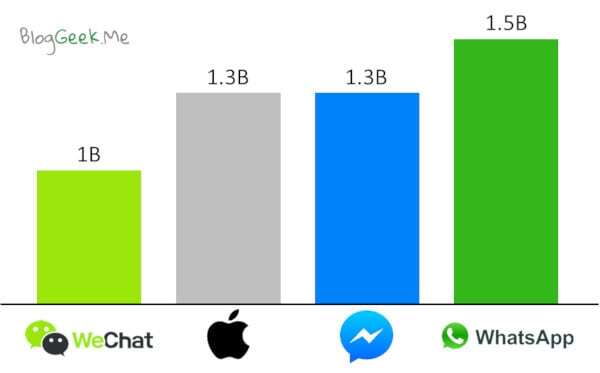Social messaging is killing RCS in all the places that matter.

When looking at messaging in the context of communications and people, we can probably split the story into 3 distinct models:
- Consumer centric
- Business centric
- Businesses to consumers (and vice versa)
I’ll quickly sift through the first two and focus on the third.
Consumer Centric
Consumer centric is easy. That’s where Apple iMessage, WhatsApp, Facebook Messenger, Telegram, WeChat and a bunch of others are competing. The approach there today is to deliver a rich messaging experience that includes text, images, video, voice and video calling, location, groups, … – the list goes on. And on. And on.
They have won the war against SMS. We still have SMS. Some mistakenly call it ubiquitous (on my phone it is used for spam and 2FA messages only). They won the war against RCS that never really started.
To give you a clue – Israel is a WhatsApp country. If you don’t have WhatsApp you don’t exist. It is true from the age of 8. I just purchased the first smartphone for my 8 year old boy. Not so he can play or call with the phone – just so he can send messages to his classmates and stay part of the social fabric of his class. It happened to my daughter when she reached that age. I am now a part of multiple WhatsApp groups: family, close friends, parents of my kids’ classes and after classes, work related, etc.
How easy would it be to move people in Israel from entrenched groups that hold history, images and videos? And to what end? How would RCS be any better in its experience?
Business Centric
Business centric is Slack. It used to be all about calling and the PBX. Slack changed the game. Everyone is talking about “team messaging” today. I used the term enterprise messaging years ago.
What Slack did was find a good balance between functionality and user experience that no other player has been able to copy properly so far, but everyone is after.
- Cisco wrote Spark from scratch, then rebranded it as WebEx Teams
- Then there’s Microsoft Teams, which gobbled up Skype for Business
- And there’s Facebook for Workplace
- Google had Google Talk, and Voice, and then Hangouts, and then Meet, and now Google Hangouts Chat
- Did I miss anyone? Maybe: Twist, Flock, Discord, Mattermost, ChatWork, Ryver, Zoho Cliq, RingCentral Video, Semaphor, Troop Messenger, Redbooth, Flowdock, and the list goes on – each with its own shtick
WhatsApp is unlikely to penetrate businesses in a meaningful way. Facebook built Workplace instead of trying to introduce Facebook or Messenger directly.
Where’s SMS in this orgy of messaging? Meaningful conversations happen in IP messaging services and not over SMS anymore. Some solutions, like VonageFlow offer a seamless experience that encompasses both messaging as we know it today and SMS, though I’d argue that capability is a business to consumer one.
For all intent and purpose, SMS is non-existent when it comes to business centric messaging.
Business to Consumer
Back to RCS. RCS was supposed to be the future of SMS when we all move to IP based packet networks. Guess what? We’re all on IP based packet networks, and RCS isn’t really here yet in any meaningful way.
In the past couple of years, RCS got a new tune by its proponents. The strategy changed from getting consumers back from social networks towards being the one ubiquitous network – the ring to rule them all. Here’s the idea: you get RCS on all smartphones worldwide. Now carriers have the ubiquity they had with SMS. And businesses would pay for such access to customer’s phones.
Not going to happen.
Why? Because Apple and Facebook have other plans for us.
Apple now has Apple Business Chat. It is built into the iPhone, making businesses discoverable and reachable over iMessage from the Safari browser, Spotlight search, Siri assistant and Apple Maps. I’ve written extensively about it when it was introduced on SearchUC: Apple Business Chat looks to polish customer messaging
WhatsApp came out with their own offering called WhatsApp Business API. Similarly to Apple Business Chat, it offers the ability for businesses to communicate with consumers. Apple does that by focusing on contact center vendors while Whatsapp partners with CPaaS vendors. The goal? Get higher exposure and not working directly with longtail developers in the initial release.
What drove me to even start writing this article? This title of a TechCrunch post: Wish, Netflix, Uber and ~100 others testing WhatsApp’s new Business API
Businesses aren’t waiting for RCS. They are trying to figure out how to communicate with their customers via WhatsApp.
They had Line, WeChat, Facebook Messenger. And they’re still aiming for WhatsApp – a messaging service that isn’t even a US-thing.
Which brings me to the main thing – business to consumer is now a social messaging realm. Carriers have lost that domain as well.
1 Billion Defines the Moat
Remember ubiquity? Here’s what it takes to be interesting:
1 Billion Monthly Active Users
Who has that number today?

Facebook (WhatsApp + Messenger), Apple Business Chat and WeChat. WhatsApp being the biggest one are redefining this market. You hear a lot about how customers still phone businesses and chat isn’t catching up with contact centers. That might be true, but only partially.
Today’s chat solutions usually require being on the company’s website. SMS hasn’t proven itself in a large scale for anything other than notifications to customers on orders and transactions. Whatsapp can change that – and to that extent, any of the other 1B+ MAU social messaging apps.
RCS? With what billion users exactly?
With the large social networks, a 100 million monthly active users seem like a rounding error.
Focus is on Customer Care – Not Marketing
Another interesting aspect (and difference) is that social networks are keeping user identity and access close to their chest. While WhatsApp is using phone numbers for identity, piggybacking on carriers in a way, they are not allowing anyone access to a user without the user’s permission. This means:
- Businesses can’t “spam” users by sending them unsolicited messages just because they know their phone number or user name
- A user must first approach the business. Inbound use cases are the focus here, which lends itself nicely to support and purchasing activities
- Outbound marketing campaigns, ads, promotions – these aren’t something that are encouraged at the moment
What these networks are trying to do is to get businesses and consumers off their SMS communications and shift it to their network. To do so, they plan on offering a superior experience. They are doing that not only by adding richness over the limited 160 character experience of SMS, but they are also making sure this will be a useful service to their user base and won’t be considered spammy.
Will there be other avenues opened to businesses on social networks to interact with users through marketing campaigns and outbound messaging? Sure. But it isn’t the first priority. The market needs to be created first.
Where Can We Go Next?
We are headed towards an omnichannel interaction model.
To me that means that a business will meet a customer wherever it is comfortable for the customer in the context of that specific interaction.
A customer may prefer a phone call at one interaction, but a chat over WhatsApp on another.
The challenge here is that different customers may prefer different social networks. Or aren’t even approachable on some of the social networks. This isn’t going to change any time soon either. The number of social networks is still growing, and while we have a few huge players, others are important to specific populations.
Businesses will need to rely on multiple such channels if they want to reach out to a larger target audience of potential customers.
Back to RCS
It is coming. In some carriers. On some devices. In some form.
Is it going to take back ownership of the interactions from social networks? No.
What it can be, is just another channel. Right next to the rest. It will only become important if it can make that 1 billion monthly active users mark.
Oh, and it will need to succumb to the rules of engagement laid out by social networks today, around business-to-user permissions.

I think it should also be said that the social revolution will kill International PSTN as well as any RCS hopes. What millennial, or Z, in their right minds will ever make an International phone call again when Messenger, WhatsApp, WeChat and every other social app they might use can do that for you with one-touch contextual voice and video to anyone in the world? This is the final coup de grâce that Skype started – still today, I believe, the largest International calling platform.
All true…
Back in 2007 on my first day working for a telco mobility company in Canada I was sent to a presentation. The presenter was an IT architect selling us something called RCS. 4 years later I left the company and he was still extolling the virtues of RCS. 4 years after that he finally conceded and left the company. RCS didnt catch on in last decade and it wont in the future.
Mike,
I am not surprised. I’ve been at it myself. Before the iPhone, I worked on VoLTE and RCS projects. I can’t say any of these came to any commercial success.
Today, it is probably going to be too little too late even if something is done with RCS.